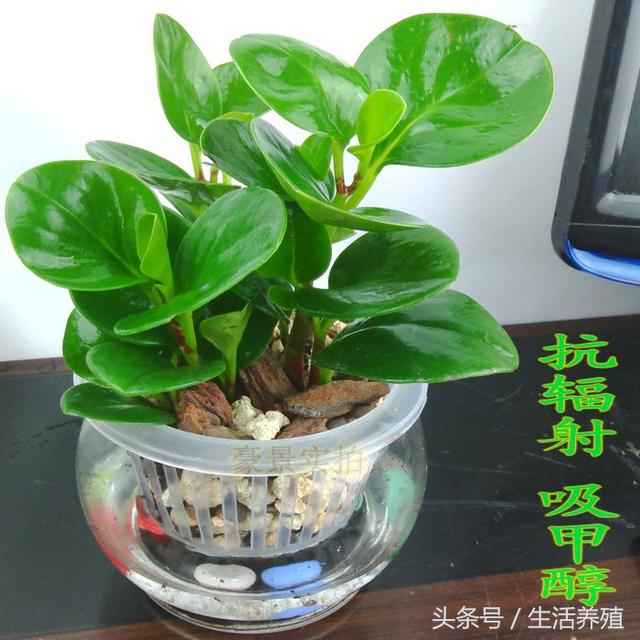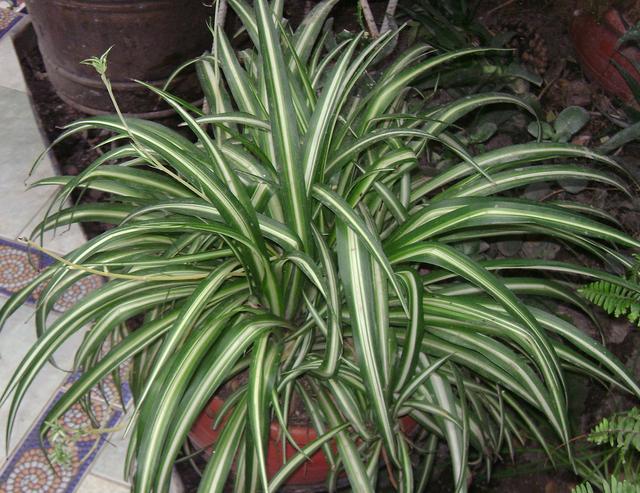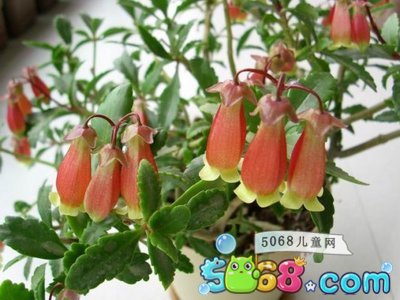How to maintain Ruyi plants
The new house is most suitable for breeding plants and teaches you how to cultivate and maintain potted watercress at home.

Aliases: pepper, emerald pepper, green leaf Jasper, watercress.
Applicable place: coffee table, decorative cabinet, bookshelf, desk.
Elevate the heart of the heart
Soil
Like loose, fertile and drained moist soil.
Lighting
Avoid direct sunlight and it is recommended to grow in semi-overcast or 70% shadows. If it is placed indoors, it should be placed in a place illuminated by strong light and moved to an outdoor semi-shade or shade for 1 month every 1-2 months to accumulate nutrients and restore growth.
Temperature
The growth temperature is about 2 °, the lower temperature is not less than 10 ℃, and it is not resistant to high temperature.
Moisture and humidity
There should be more watering during the growing period from May to September. When the weather is hot, put it in a cool and ventilated place and spray water or water on the leaves to ensure that there is enough humidity in the air. However, too much watering is easy to rot, and it is better to keep less water at a time, but keep the soil moist.
Knowledge of flower protection
Fertilization
There are many requirements for fertilizer and water, but most of them are afraid of fertilization, concentrated fertilizer and partial application of nitrogen, phosphorus and potash. Follow the fertilization principle of "obesity, diligence, small amount, and multi-nutrition". From May to September, it was asked that P fertilizer could be used for 2-3 weeks. In the winter dormancy period, the main work is to control fertilizer and water control. When the temperature is high at noon on a sunny day, watering should be arranged as far as possible.
Pruning
When the height of the plant is about 10 cm, the heart can be picked properly to promote the sprouting of lateral branches and keep the plant type adequate.
Change basin
The basin is changed every 2-3 years.
Breeding
Mainly cutting, reproduction and ramet. Cutting reproduction requires the selection of sturdy top branches from April to May, about 5 cm long, insertion and insertion
On the wet sand bed. Ramets can be mixed with humus soil, peat soil and some perlite or sand, and add the right amount of base fertilizer. During the growth period, fertilize once every half a month, watering is better watering in the tank for 1-2 days, watering in winter. In summer, if you are afraid of heat, you can spray cooling in the shade, but you should be aware that overheating and too much can cause stems and leaves to blacken and rot. There is plenty of light in winter and summer. Avoid direct sunlight during the season.
Overwintering
Avoid cold frost, the winter temperature needs to be kept above 10 °C, and the winter temperature drops below 4 °C to enter dormancy. If the ambient temperature
When it approaches 0 °C, it will die of frostbite, so it should be moved to a brightly lit place indoors. If it is outdoors, it can be wrapped in film for the winter, but the film should be discharged at high temperature every 2 days.
Diseases and insect pests
There are mainly ringspot virus disease, root and neck rot, embolism, scales and mites. Ringspot virus disease can be sprayed with the same amount of Bordeaux liquid mixture. Root rot, embolism can spray 50% carbendazim wettable powder 1000 times. Insect mites and mites should be prevented in time and 800 times omethoate should be sprayed.
This article is original, please indicate.
How to cultivate foliage plants, learn these 5 tips, teach you to maintain foliage plants
Many flower lovers like to keep foliage plants. Foliage plants are easier to deal with than flowering plants, and they are relatively easy to raise. They are very suitable for maintenance of office workers and overtime dogs. After a tired day, foliage plants will give you a happy mood.
1. Avoid direct sunlight
Leafy plants are usually more shady and do not adapt to direct sunlight, so avoid direct sunlight when placing. You can collect plants outdoors every week and get plenty of sunlight, but avoid the strongest sunlight. Plants can grow better when the sun is warm in the morning or afternoon.
two。 Keep plenty of water
Water the foliage plants. Don't pour water often until the potted soil is dry. In hot summer weather, water can be sprayed like leaves to keep the leaves moist, prevent them from yellowing, poor growth, death, and conducive to plant growth.
3. Fertilizing foliage plants
Foliage plants can be fertilized once a month or every 15 days. Don't use rich fertilizer. In hot summer and cold winter weather, fertilization should be stopped so that leafy plants can grow better!
4. Suitable temperature
Leafy plants should keep warm in winter. Evergreen, green radish, tiger peony, iron tree, pineapple, sage, hulk and other plants need a warm environment to grow. They can be placed on the indoor balcony and kept above 12 °C. Temperature.
5. Potted plant protection
Foliage plants can be preserved by potted plants. Pots can be selected from plastic basins, mud pots and purple sand basins. Usually, potted plants are cultivated in pots. The mud basin has good air permeability and water permeability, which can make the plants grow more luxuriantly. If you think the flowers are ugly, you can set up plastic pots outside the pottery pots, commonly known as "pots". They are beautiful and generous and are favored by the majority of flower friends.
I believe that flower friends have a certain understanding of how to keep foliage plants. Foliage plants are the favorite plants of most flower lovers. They are very beneficial to purify the air and human health. Most florists can learn from the basics. Choose potted plants, watering, fertilization, placement, etc., slowly learn how to maintain plants, leaf plants can grow better.
How to improve hydroponic plants
First of all, the advantages and disadvantages of hydroponic plants are not mentioned. This paper mainly discusses how to cultivate hydroponic plants. The maintenance of hydroponic plants is much simpler than that of soil cultivation, but some details can not be ignored.
Although in theory all plants can be cultivated in hydroponics, including Rosa roxburghii, hydroponics does not mean that they are suitable for hydroponics. Sometimes, hydroponic culture is just a way of protection. What we get is short and pleasant, as well as the loss of plant growth.
The above paragraph tells flower friends that hydroponic plants are not a good way to maintain. Let's take a look at how to cultivate hydroponics.
1. Hydroponic plants are not suitable for preservation in an environment where the sun is too strong, because sunlight can cause green algae in the water, and the roots rot easily. A better conservation environment should be astigmatism or backlight (most hydroponic plants are foliage plants, so they can be properly maintained in the dark. )
two。 The roots of hydroponic plants should not be put in water. The roots of plants also need to breathe. Therefore, when we treat hydroponic plants, we should properly expose the roots to about 1-5 cm, the air of different plants. More exposure to air can help plants breathe at their roots. For example, in the following figure, we can see that part of the root system is in contact with the air.
With regard to the question of nutrient solution, many nutrient solutions are fake. If you are not sure whether the nutrient solution you purchased is correct, please do not use it. If you insist on changing water, you can provide nutrition.
With regard to the change of water, we must first prepare clean water. If it is tap water, we should dry it two days in advance and then change the water. Hydroponic plants, in fact, these four points are main, one should not be exposed to the sun, a good one should be breathed to the roots, the third should be cautious about nutrient solution, and the fourth should be replaced regularly.
Later, it is still an old saying that although plants can survive in hydroponics, it is difficult to grow well, and there is a process of domestication, especially some esoteric flowers and plants (scorpions' green stems can't say, how to raise won't die). Therefore, there must be a psychological preparation for the treatment of hydroponic plants.
Time: 2019-05-15 Click:
- Prev

How do you keep a silver heart in summer?
What should I do about the cause of the silver rim break? Lifting cranes has many benefits! As we all know, there are many varieties of spider plants, today we are talking about is the silver-winged spider plants. Recently, many people complain about why we raise silver-breasted spider orchids for no reason. How to solve this problem? so
- Next

Culture method of longevity flower in palace lantern
The longevity of the palace lantern, also known as the big palace lantern, is a kind of perennial succulent herb. Its shape is similar to a small lantern, so the palace lantern is the name of the longevity flower. Do you want to know the cultural method of longevity flowers of palace lanterns? Here is an editor to introduce the breeding methods and breeding methods of longevity flowers of Palace Lantern.
Related
- Fuxing push coffee new agricultural production and marketing class: lack of small-scale processing plants
- Jujube rice field leisure farm deep ploughing Yilan for five years to create a space for organic food and play
- Nongyu Farm-A trial of organic papaya for brave women with advanced technology
- Four points for attention in the prevention and control of diseases and insect pests of edible fungi
- How to add nutrient solution to Edible Fungi
- Is there any good way to control edible fungus mites?
- Open Inoculation Technology of Edible Fungi
- Is there any clever way to use fertilizer for edible fungus in winter?
- What agents are used to kill the pathogens of edible fungi in the mushroom shed?
- Rapid drying of Edible Fungi

